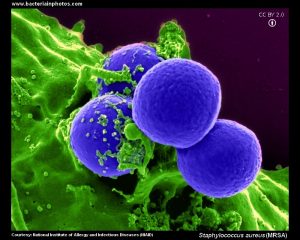Microbiota and microbiome
- These are two terms that recur more and more often both in scientific journals and in popular publications devoted to the body's health and well-being. They are sometimes used as synonyms even though, strictly scientifically speaking, they have different meanings.
The microbiota indicates the population, in the order of several billion, of micro-organisms (archaea, bacteria, yeasts, viruses, fungi), present throughout our bodies, on the dermis and in all our cavities and which, in the right balance between eubionti (micro-organisms with beneficial actions) and pathobionts (disease-causing microorganisms), are necessary for our well-being.
By the term microbiome indicates, on the other hand, the totality of the genetic heritage possessed by the microbiota, i.e. the genes it is able to express.
The functions of the microbiota
 The microorganisms of the gut microbiota help us assimilate food, protect us from many diseases and produce substances that are very useful for our metabolism, including vitamins, including vitamin D, short-chain fatty acids (SCFA), some hormones and neurotransmitters.
The microorganisms of the gut microbiota help us assimilate food, protect us from many diseases and produce substances that are very useful for our metabolism, including vitamins, including vitamin D, short-chain fatty acids (SCFA), some hormones and neurotransmitters.
Today, the gut microbiota is an important therapeutic target for many inflammatory, autoimmune, neurodegenerative and many other diseases that scientific studies are progressively identifying.
The composition of the individual microbiota, and of the gut microbiota in particular, is influenced by pregnancy, natural or caesarean birth, breast or formula feeding, weaning, excessive hygiene, stress, exercise, drug therapies, and above all diet.
With reference to drugs, it is very important to emphasise that antibioticsWhile they prevent the proliferation of pathogens and the development of infectious diseases, they also undermine the normal bacterial population, which resides mainly in the gut, where it plays a key role in maintaining the health of the host organism.
It is, however, the diet, which exerts one of the main influences on the balance of the microbiota, as the diet is a source of essential nutrients for the human organism not only to support growth, vital and reproductive functions, but also to modulate and support the various microbial communities and in particular the gut microbiota.
The choice of a type of food, its quality characteristics and even its origin shape our gut microbes, influence their composition and function, and have an impact on host-microbe interactions.
In particular the Mediterranean diet, MedDiet (Mediterranean Diet), has a high prebiotic potentialas it includes a high consumption of legumes, vegetables, whole grains and fruit, the same 'healthy' carbohydrates, especially non-digestible carbohydrates such as fibre and resistant starch.
I prebiotics are, in fact, non-digestible substances contained naturally in certain foods - mainly water-soluble, non-gelling fibres including non-starch polysaccharides or beta-glucans, fructans, oligofructosaccharides, inulins lactitol, lactosaccharose, lactulose, pyrodextrins, soy oligosaccharides - which promote the growth, in the colon, of one or more bacterial species useful for the development of probiotic microflora.
Specificity of the ocular microbiome
In the human eye coexist numerous bacterial microhabitatswhose composition reflects the levels of exposure to the outdoor environment.
Studies, published in the literature, have shown that the gender most represented on the ocular surface is the Corynebacteriumfollowed by Staphylococcus, Streptococcus, Acinetobacter e Pseudomonas.
 In particular, a study recently published in The Ocular Surface, analysed the structure and distribution of bacterial communities in the different microhabitats of the human eye to identify their similarities and differences.
In particular, a study recently published in The Ocular Surface, analysed the structure and distribution of bacterial communities in the different microhabitats of the human eye to identify their similarities and differences.
The four ocular sites analysed were:
- fabric of the eyelid margin of patients with eyelid abnormalities
- fabric conjunctival fornix and limbus of patients with pterygium
- pads of the ocular surface (conjunctival)
- pads of the facial skin.
The study proposed a classification of ocular bacterial distribution into three groups:
- Group 1consisting of micro-organisms residing on the skin and eyelid margin and moving from there to the ocular surface, as indicated by a low relative abundance at this site. The genera belonging to this group are Corynebacterium e Staphylococcus. The former was constantly present on the outer surface of the skin, and its relative abundance progressively decreased as it moved from the skin (12.2%), to the eyelid margin (7.6%), to the ocular surface (4.0%), but was rarely present in conjunctival tissue samples. Similarly, Staphylococcus, common skin resident, was abundant on the skin surface (15.1%), decreased in the eyelid margin (1.9%) and was present in relatively low amounts on the ocular surface (3.1%).
- Group 2consisting of micro-organisms localised mainly on the ocular surface and detected at low levels on the skin, eyelid margin and conjunctiva. Members of this group may be acquired from air or water and may be able to survive on the ocular surface, but not in other regions of the eye. Acinetobacterwas isolated in relatively greater abundance on the ocular surface (12.3%) than on the skin (1.0%) and eyelid margin (0.5%).
- Group 3consisting of micro-organisms present in the conjunctiva and inside the eyelid margin and found inconsistently and in relatively low abundance on the skin and ocular surface. To this group belongs the genus Pseudomonas. Not all members of this group, however, showed the same distribution; some were consistently present in the conjunctiva and eyelid margin, others were more specific to the conjunctiva, and one was specific to the eyelid margin.
The results of this research are very interesting as they showed that the microorganisms in and around the eye are clearly spatially organised and that and this biogeography is representative of a process of microbial dispersion and environmental selection.
This article can also be downloaded as Sheet no. 5 - Microbiota part 1.
Dr. Carmelo Chines
Direttore responsabile
